Rising sea levels are threatening Tunisia’s 1,100 kilometres of Mediterranean coastline, and the effects are far-reaching: people along the coast account for 90 per cent of the country’s total economic output. Now the measures implemented since 2013 are beginning to bear fruit.
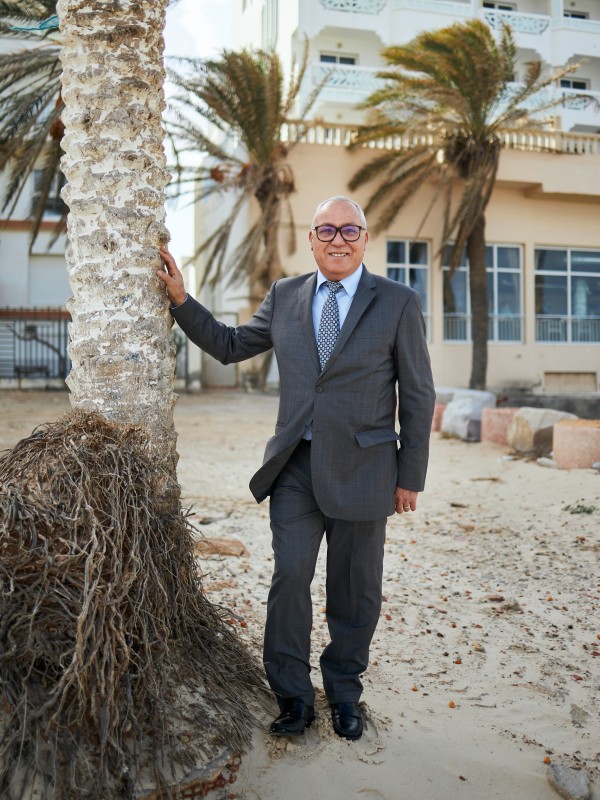
Hotelier Bouaouina Hichem from the coastal town of Hammam Sousse is relieved that the beach in front of his hotel is no longer receding.
Bouaouina Hichem (image right) stands beside a palm tree on the beach in Hammam Sousse. “The water was up to here three years ago,” says the hotelier. Behind him, a few metres behind the palm tree with the tangle of roots left exposed by the rising waters, stands his “Dreams Beach” hotel. Hichem is from the area. As a child he played football here by the sea. Over the years, the beach had been washing away metre by metre; the waves crept closer all the time. But today, a sandy, white strip of shoreline sprawls along the coast in Hammam Sousse. There are now about 30 metres of land between the “Dreams Beach” hotel and the water again. “The tourists benefit from coastal protection,” says the hotel owner. He does too, of course.
Mohamed Ali Torki (image above) explains how the beach has been rebuilt in the Tunisian seaside town of Hammam Sousse. Torki is an engineer and the technical manager at the Tunisian coastal protection agency APAL (Agence de Protection et d’Amenagement du Littoral) and supervises the extensive Tunisian coastal protection project.
Video: coastal protection measures in Tunisia (KfW Bankengruppe/Christian Chua und Thomas Schuch).
Protecting Tunisia’s coastal landscape
APAL rebuilt the beach in Hammam Sousse by creating submarine breakwaters. They prevent coastal erosion and allow more sand to collect on the beach. This is one of the methods that Tunisia is using with KfW’s support to stabilise its Mediterranean coastline, which is threatened by erosion. The first three phases of the project have cost close to 38 million euros. It began in 2013 and, thus far, the Tunisian government has financed 25 per cent and KfW has financed 75 per cent with grants and loans on behalf of the German Federal Government. In light of rising sea levels, the programme also has the objective to “increase the adaptability of the Tunisian coastal landscape to climate change,” says Andrea Hauser, Head of Division for North Africa at KfW Development Bank.
Tunisia’s Mediterranean coastline is around 1,100 kilometres long. Just over ten per cent of the coastline is considered severely threatened by erosion. That could have devastating consequences for Tunisia, as the coastal regions are the demographic and economic backbone of the country. Nine of the country’s ten largest cities are on the coast; two thirds of the eleven million Tunisians live here. They are responsible for 90 per cent of the country’s total economic output. (Seaside) tourism accounts for around seven per cent of the gross domestic product.
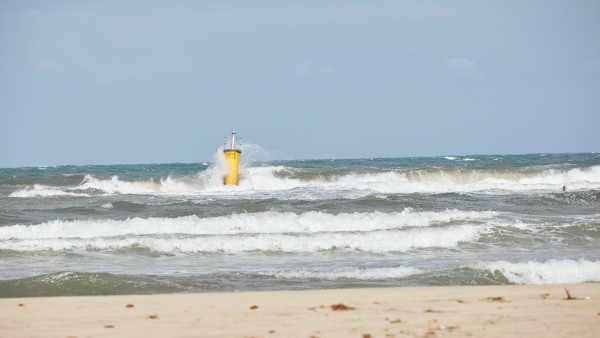
Over ten per cent of Tunisia’s Mediterranean coastline is under severe threat of erosion.
Rocks and fences made from pinewood
As part of the Paris Agreement, Tunisia declared coastal protection as one of its focus areas to combat climate change. The government anticipates that the level of the Mediterranean Sea will rise by up to half a metre by 2050, resulting in the loss of half a per cent of the gross domestic product per year if they do not tackle the threat.
Robust shorelines can withstand rising waters and thus protect densely populated areas and economic centres from flooding. Seawater that makes its way further inland also diminishes the drinking water supply, as it increases the salinity of the land and ground water.
In addition to submarine breakwaters like those in Hammam Sousse, APAL is also using other methods to defy the waves. For example, over a stretch of four kilometres so far, they have used fences made from pinewood to stabilise the dunes, which act as a natural protective barrier. In other places like the Kerkennah Islands lying across from the port and industrial city of Sfax, rocks line the sandy shoreline. Behind that runs a paved esplanade, creating small squares. The strips along the sea are used for protection, while improving the quality of the living space along the shoreline at the same time.
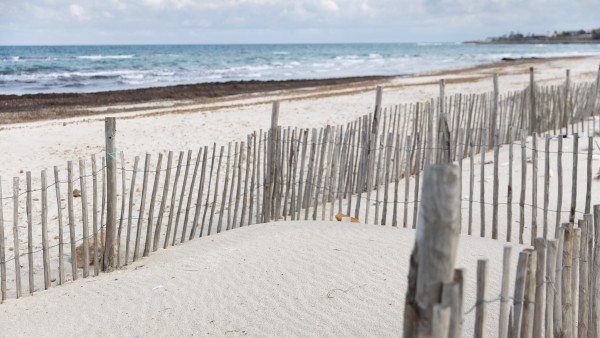
The Tunisian coastal protection agency stabilised the dunes with measures such as fences made from pinewood.
Sand from the seabed is being checked for suitability
The APAL engineer calls it a win-win situation due to the fact that coastal protection and beach reclamation go hand in hand. However, APAL does not just have tourists in mind. In Raf Raf, between the capital city Tunis and the coastal town of Bizerte, they built groynes and filled them with 500,000 cubic metres of sand. The inhabitants of Raf Raf were finally given something that they had missed for a long time: a beach.
Procuring the materials proved to be the most challenging part. Law has prohibited taking sand from beaches in Tunisia since the 1980s. Would sand from the desert be a good replacement? Torki explains that it is too powdery and much too fine. APAL employees paid visits to 40 quarries before they found material that was coarse enough. The sand they shipped to Raf Raf is three or four million years old, says Torki, and he addresses an obvious alternative: a beach made of sand from the bottom of the sea. He explains that KfW – on behalf of the German Federal Government – is financing the corresponding feasibility studies in Tunisia.
Video: KfW is supporting Tunisia in various projects on behalf of the German Federal Government (KfW Group/Christian Chua and Thomas Schuch).
The rising sea level and flooding remain a threat for Tunisia's Mediterranean coast. Around 30 kilometres of shoreline have been treated with protective measures thus far. The largest part of the task still lies ahead for the Tunisian coastal protection agency. “We have to intervene in the places where climate change has created the most noticeable issues,” says Torki. His agency has learned to work with sustained effect. In the past, the state would implement a programme and then disappear again. The groynes built today are expected to last 50 years. At least.
Published on KfW Stories: 9 March 2020.
The described project contributes to the following United Nationsʼ Sustainable Development Goals
Goal 6: Ensure access to water and sanitation for all
There is no life without water! We need it for drinking, but also for producing food in agriculture. The United Nations thus recognised access to clean drinking water as a human right in 2008. However, 748 million people still live without clean drinking water. According to estimates, this causes the deaths of 5,000 children around the world each day. 2.5 billion people lack access to basic sanitation services.

All United Nations member states adopted the 2030 Agenda in 2015. At its heart is a list of 17 goals for sustainable development, known as the Sustainable Development Goals (SDGs). Our world should become a place where people are able to live in peace with each other in ways that are ecologically compatible, socially just, and economically effective.

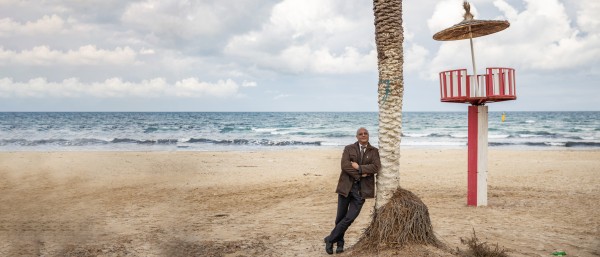
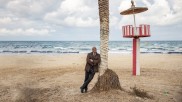
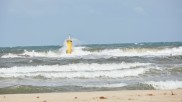
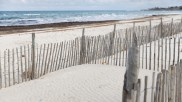
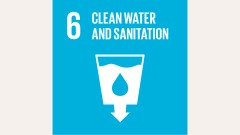
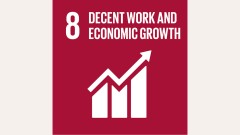
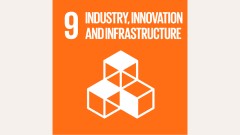
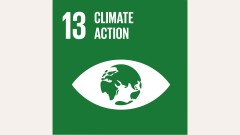
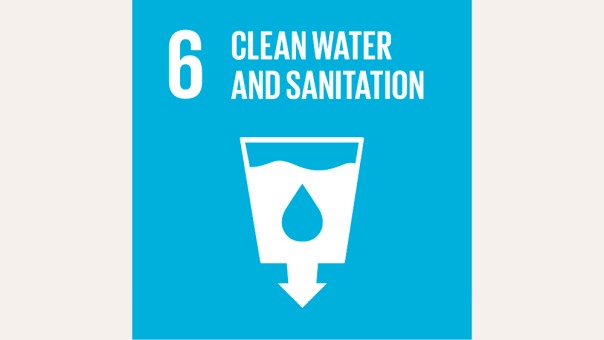
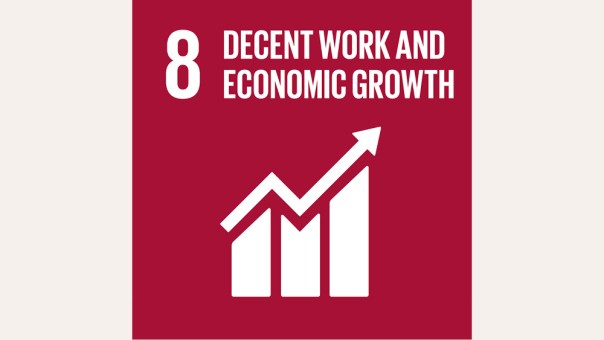
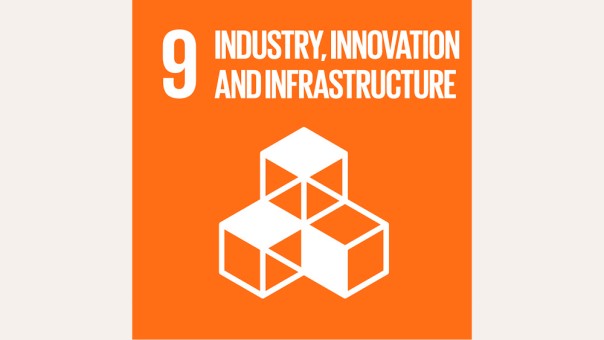
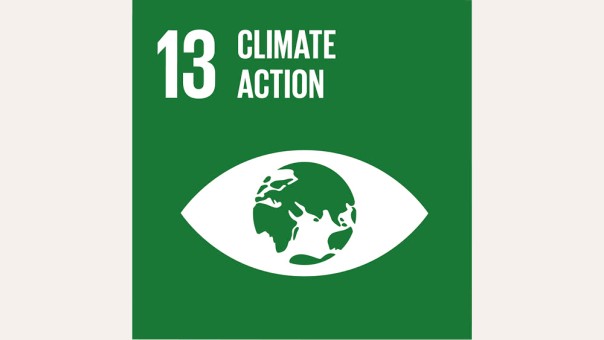

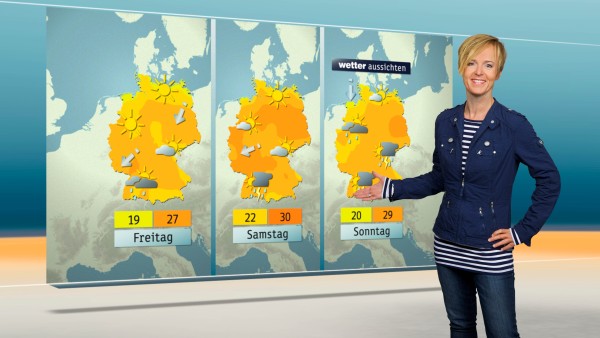

Data protection principles
If you click on one of the following icons, your data will be sent to the corresponding social network.
Privacy information